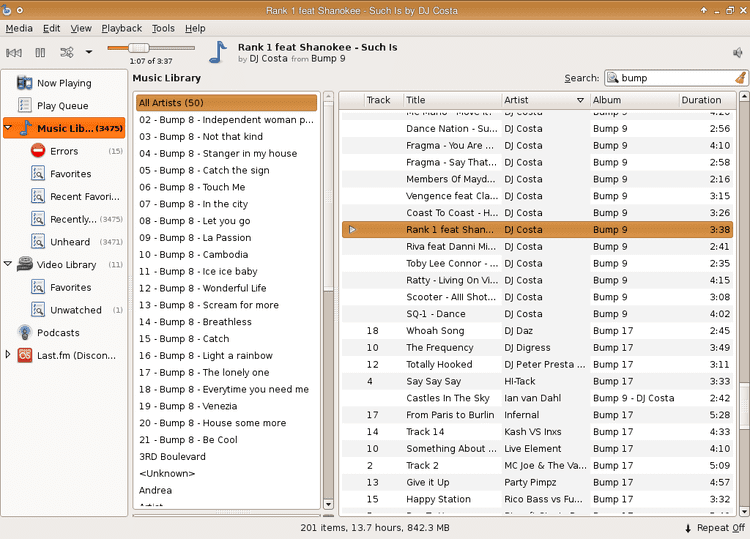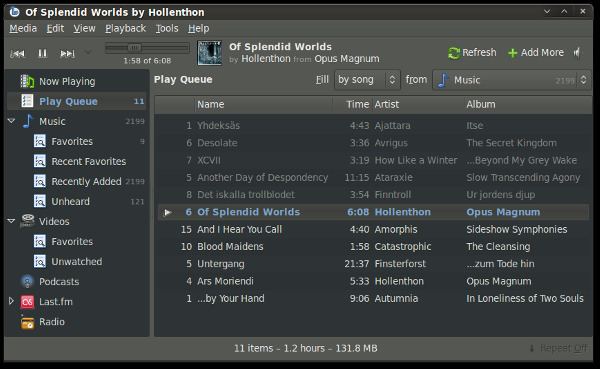Website banshee.fm Initial release 17 February 2005 Type Media player | Developers Novell Written in GTK+, C# | |
 | ||
Stable release 2.6.2 (February 18, 2014; 3 years ago (2014-02-18)) [±] Preview release 2.9.1 (March 18, 2014; 2 years ago (2014-03-18)) [±] Repository git.gnome.org/browse/banshee/ | ||
Ubuntu desktop for beginners how to setup banshee media player on ubuntu
Banshee is a cross-platform open-source media player, called Sonance until 2005. Built upon Mono and Gtk#, it uses the GStreamer multimedia platform for encoding and decoding various media formats, including Ogg Vorbis, MP3 and FLAC. Banshee can play and import audio CDs and supports many portable media players, including Apple's iPod, Android devices and Creative's ZEN players. Other features include Last.fm integration, album artwork fetching, smart playlists and podcast support. Banshee is released under the terms of the MIT License. Stable versions are available for many Linux distributions, as well as a beta preview for OS X and an alpha preview for Windows.
Contents
- Ubuntu desktop for beginners how to setup banshee media player on ubuntu
- Banshee media player works fine
- Plugins
- Cross platform support
- Release history
- Helix Banshee
- References

Banshee uses the SQLite database library.
Banshee media player works fine
Plugins
Banshee's plugin-capable architecture makes the software extensible and customizable. As of 2012 stable plugins include:

Cross-platform support

Compared to the Linux builds, which have stable releases, the Mac OS X builds are considered beta quality, and Windows builds are alpha quality (and, as of April 2013, two versions behind the other platforms). During Google Summer of Code 2012 Banshee has seen substantial improvements to its OS X support
The first alpha release of Banshee on Windows was Banshee 1.9.4, released on February 23, 2011.
Release history
Official Release History feature list
Official Calendar
Helix Banshee

Helix Banshee was a version of Banshee, included in older versions of SUSE Linux Enterprise Desktop and openSUSE. It was based upon the Banshee core, but with a plug-in to add support for the Helix framework for playback and transcoding, in addition to GStreamer.


